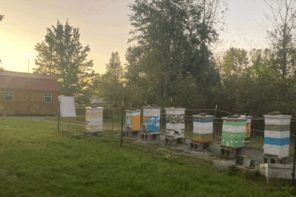John Miller
I don’t pretend to replace well-written books, speakers, or podcasts. Here we are, well into 2022 – the Big Almond Pollination Dance is well underway. Take a moment to spool up – take about five minutes to read this piece.
I keep three beekeeping quotes handy. They’ve informed a lot of decisions over the years.
Jim Powers was fond of, ‘Do what you should do, when you should do it.’
Bob Koehnen favored, ‘Acting, not because you happened to think of it – but because you have a plan.’
Ryan Elison nails it for beekeepers: ‘What are you doing today to get ready for 180 days from today?’
Three Keys to Successful Beekeeping spoken by three Beekeepers who know what they are talking about.
What are the Key Dates? In this industry, February 1 is the key date. This is the date, each year, year after year, when the supply of live colonies for pollination services is smallest. It coincides with the date, each year, year after year, when demand for live colonies for pollination services peaks.
When Ms. Varroa and her children arrived, this demand/supply dynamic changed, first slowly, then abruptly – when control measures no longer worked. Killing a bug on a bug is difficult if the idea is to keep the good bug and kill the bad bug. Pesticides make no distinctions between good bugs and bad bugs.
Beekeepers respond by making probably five million divides, annually. Think on that number for a minute. In the old days, annual mortality rates – an archive Dr. Mussen kept in U. C. Davis for many years – seldom exceeded 5%. The new normal is over 40% annual mortality, as documented by the Bee Informed Partnership. Over two million hives perish each year in the new normal; some years more; few years less. This is, in the words of Ron Spears, ‘A Mess. And that mess follows you for months.’
Let’s go a little deeper into that five million nucs number. I calculate that it takes eight to 10 hours of labor per nuc. From the time you bust the parent till that nuc is a rentable pollinating unit February 1 – you have eight to 10 hours invested in the nuc. 40% will die.
Why are Beekeepers making five million nucs a year? The idea is, for commercial guys: A thousand extra five frame nucs will keep the hive count up through February 1. 40% will die.
But! Those 600 rentable hives will generate $120,000.00 in February. Numbers Matter.
Note* If you happen to also make a honey crop, good; but honey production is a shrinking income base – and an unreliable income base. Beekeepers pivot to other beehive income-related streams. Additional crops are pollinated, frames of brood, bulk bees, five frame nucs, pollen collecting, propolis harvest, are all hive-related income potentials. All require labor.
Conditions may improve. I’ve long wanted better beekeeping tools. As previously written, I asked Dr. Mark Winston in 1986 for a chemistry graph on Queen Mandibular Pheremone; which he provided. Thirty-six years later –No QMP reader device – we still open up nucs, rummage around looking for a ‘good pattern’ – or – ‘yup, I seen her’ subjective decision by a beekeeper who might be having a really good day – or a not so good of a day. 40% of those good nucs will be dead in a year. We need better tools.
Conditions may improve. I’m a terrible teacher; but I hired people who are good teachers. I can run a business; but I lack the patience to teach someone who has yet to master the art of beekeeping. I knew I wanted to keep bees in spite of the stupidity of youth – I wanted to keep bees, and I Get Bees. A lot of other folks, 99% of the rest of us – Don’t Get Bees. This is where the hired teacher/mentor can profoundly improve conditions. If you’re smart enough to run a business, you’re also smart enough to hire a good teacher. Don’t waste that Key to Successful Beekeeping.
February 1 is the Key Date.
40% annual mortality is a Key Statistic.
Labor is a Key Expense.
Messes follow you for months.
Numbers Matter.
Acting, Because you have a Plan for 180 Days from Today – is Key Wisdom.
Honey Production is not Key.
What are we doing today – to get ready for September 1?









